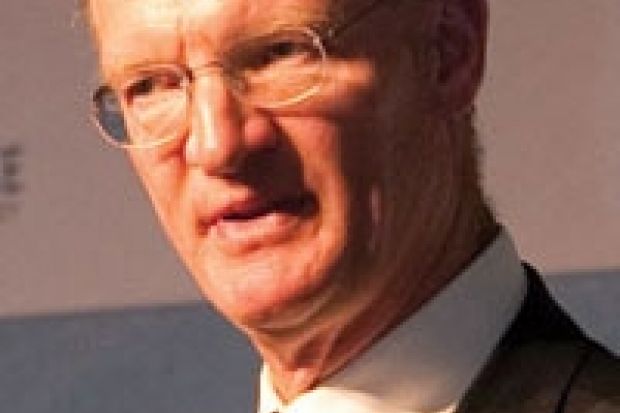The coalition has also revealed that provision for 10,000 additional student places allocated this year will be cut by 2012, when the impact of higher tuition fees on university applications will start to be felt.
In its grant letter to the Higher Education Funding Council for England, which sets out precise allocations for 2011-12, the Department for Business, Innovation and Skills said £304 million would be cut from the teaching budget from April next year.
The letter also indicates that teaching funding for 2012-13, when fees will begin to substitute lost grant money, is set to be cut by £1.1 billion from current levels to £3.8 billion and is projected to fall to £2 billion by 2014-15.
A spokeswoman for BIS said all the figures were in cash terms, meaning that they have not been adjusted for inflation; the real-terms cut to teaching budgets could be nearer 10 per cent next year, 30 per cent by 2012-13 and more than 70 per cent by 2014-15.
In the letter, BIS includes totals for the amount it will lend in student loans to cover fees to show that universities will receive millions more in income to compensate for the lost grant money from 2012-13.
Speaking at a press conference, David Willetts, the universities and science minister, said the 6 per cent cut to the teaching budget next year – before the new fees regime comes in – would be “something that universities will be able to deal with” through efficiency savings.
Also revealed in the letter is a huge cut to the teaching capital budget of 54 per cent in 2011-12 from £207 million to £95 million, again in cash terms. It states that this is because of the tough state of the public finances and also because “over the past decade the sector has benefited greatly from public investment in closing capital backlogs”.
BIS also set out its policy on student numbers for the near future, stating that Hefce should allow for the same number of places on offer in 2010-11, including the 10,000 extra provided by the government.
However, the letter says that universities and colleges “should work on the basis that this pulse of additional entrant places will not be repeated in 2012-13 and so the 10,000 extra places will not be repeated”.
Hefce has also been told by BIS that it should continue its “mechanisms to minimise and preferably eliminate over-recruitment” in 2011-12 while it has set the fine for those over-recruiting this year to £3,750 per student.
The grant letter also confirms that the quality-related funding stream for research will suffer an average cash-terms cut of 3 per cent over each year of the CSR period compared with 2010-11 figures. But it says that funding will be confined to “internationally excellent research”.
The split of revenue funding among the different research councils has largely been maintained. The Medical Research Council’s budget has fared best, with an average rise across the CSR period of 1.6 per cent, compared with 2010-11 figures, rising to an increase of 5.3 per cent by 2014-15. The government had pledged to preserve the MRC budget in real terms, but inflation is expected to have increased by up to 9 per cent by the end of the CSR period. The biggest hits in revenue funding have been taken by the Economic and Social Research Council and the Engineering and Physical Sciences Research Council, both of which will see an average cut of 2.6 per cent across the CSR period – although the EPSRC will continue to receive the largest slice of the overall budget.
However, the MRC saw the biggest cut in its capital budget, averaging 77 per cent across the CSR period – though capital figures are only indicative for the final three years of the CSR period. The smallest capital cut will go to the ESRC: an average of 29.5 per cent. The average capital cut across the whole research budget across the four years of the CSR will be 45.7 per cent.
The budget for the Higher Education Innovation Fund has been preserved in cash terms, but the government wants it to go only to the “most effective performers”.
